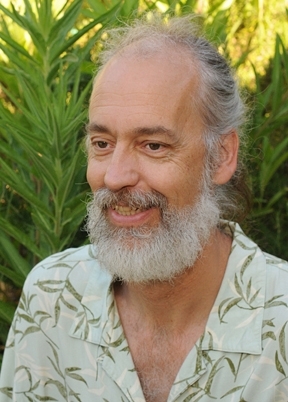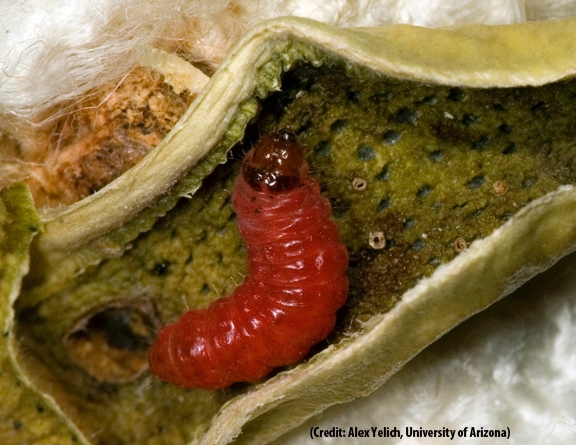
Evolutionary biology techniques can and must be used to help solve global challenges in agriculture, medicine and environmental sciences, they said.
Science Express makes important papers available to readers before they appear in the journal Science. The first-of-its-kind study will appear in a November edition of the journal.
“Evolutionary biology is often overlooked in the study of global challenges,” said lead author Scott, with the UC Davis Department of Entomology and Nematology and the Institute for Contemporary Evolution, also in Davis. “By looking at humanity's problems across the domains of nature conservation, food production and human health, it is clear that we need to strengthen evolutionary biology throughout the disciplines and develop a shared language among them.”
The study calls attention to how evolutionary biology techniques can be used to address challenges in agriculture, medicine and environmental sciences, said Carroll, noting that these techniques, although seemingly unrelated, work within a similar set of evolutionary processes.
“These techniques range from limiting the use of antibiotics to avoid resistant bacteria and breeding crops with desired benefits such as flood tolerant rice, to less commonly implemented strategies such as gene therapy to treat human disease, and planting non-native plants to anticipate climate change,” Carroll said.
“A particular worry is the unaddressed need for management of evolution that spans multiple sectors, such as occurs in the spread of new infectious diseases and antimicrobial resistance genes between natural, human health and agricultural systems.”

In their paper, the nine researchers—two from UC Davis, one from UCLA and six from universities in Denmark, New Zealand, Maine, Minnesota, Washington state and Arizona--crafted a graphic wheel divided into three sectors, food, health and environment and cited the challenges that link them together, including rapid revolution and phenotype environment mismatch in more slowly reproducing or threatened species.
Carroll said the underlying causes of societal challenges such as food security, emerging disease and biodiversity loss “have more in common than we think.”
“Humans, pathogens and all other life on earth adapt to their environment through evolution, but some adaptation happens too quickly and some too slowly to benefit human society,” Carroll said. “Current efforts to overcome societal challenges are likely only to create larger problems if evolutionary biology is not swiftly and widely implementedto achieve sustainable development.”
Society faces two sorts of challenges from evolution, the research team said. “The first occurs when pests and pathogens we try to kill or control persist or even prosper because the survivors and their offspring can resist our actions,” Carroll said. “The second challenge arises when species we value adapt too slowly, including humans.”
Although practices in health, agriculture and environmental conservation differ, each field can better target challenges using the same applications of evolutionary biology, they said.
For example, when a farmer plants a crop that is susceptible to pests, he might actually help the agricultural community as a whole by slowing down evolution of pesticide resistance, the authors said, citing an applied evolutionary biology tactic used in agriculture.
Planting pest-friendly crops has been used in the United States with good results, the team said. Farmers planting these crops slow the evolution of resistance to genetically modified corn and other crops. Pests then reproduce in abundance eating the susceptible plants, and when a rare resistant mutant matures on a toxic diet, it is most likely to mate with a susceptible partner, keeping susceptibility alive. This approach works to suppress the unwanted evolution on the whole, but farmers will have sacrificed a short-term gain for the long-term good.
Similar innovative solutions exist across the fields of medicine and environmental conservation, they said.
“This is an example of how implementing applied evolutionary biology without a plan for regulatory measures may come at short-term costs to some individuals that others may avoid.” Jorgensen said. “By using regulatory tools, decision makers such as local communities and governments play a crucial role in ensuring that everybody gains from the benefits of using evolutionary biology to realize the long-term goals of increasing food security, protecting biodiversity and improving human health and well-being.”
Other co-authors are Michael T. Kinnison, University of Maine; Carl Bergstrom, University of Washington; R. Ford Denison, University of Minnesota; Peter Gluckman, University of Auckland, New Zealand; Thomas B. Smith, UCLA; Sharon Strauss, UC Davis Department of Evolution and Ecology and Center for Population Biology, and Bruce Tabashnik, University of Arizona.
Carroll is an affiliate of the Sharon Lawler lab, UC Davis Entomology and Nematology. The research was funded in part by the National Science Foundation and the Australian-American Fulbright Commission.
(See PDF at http://www.sciencemag.org/content/early/2014/09/10/science.1245993.full.pdf)
Attached Images:
